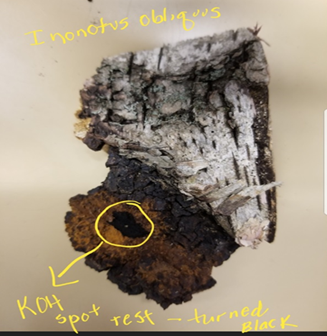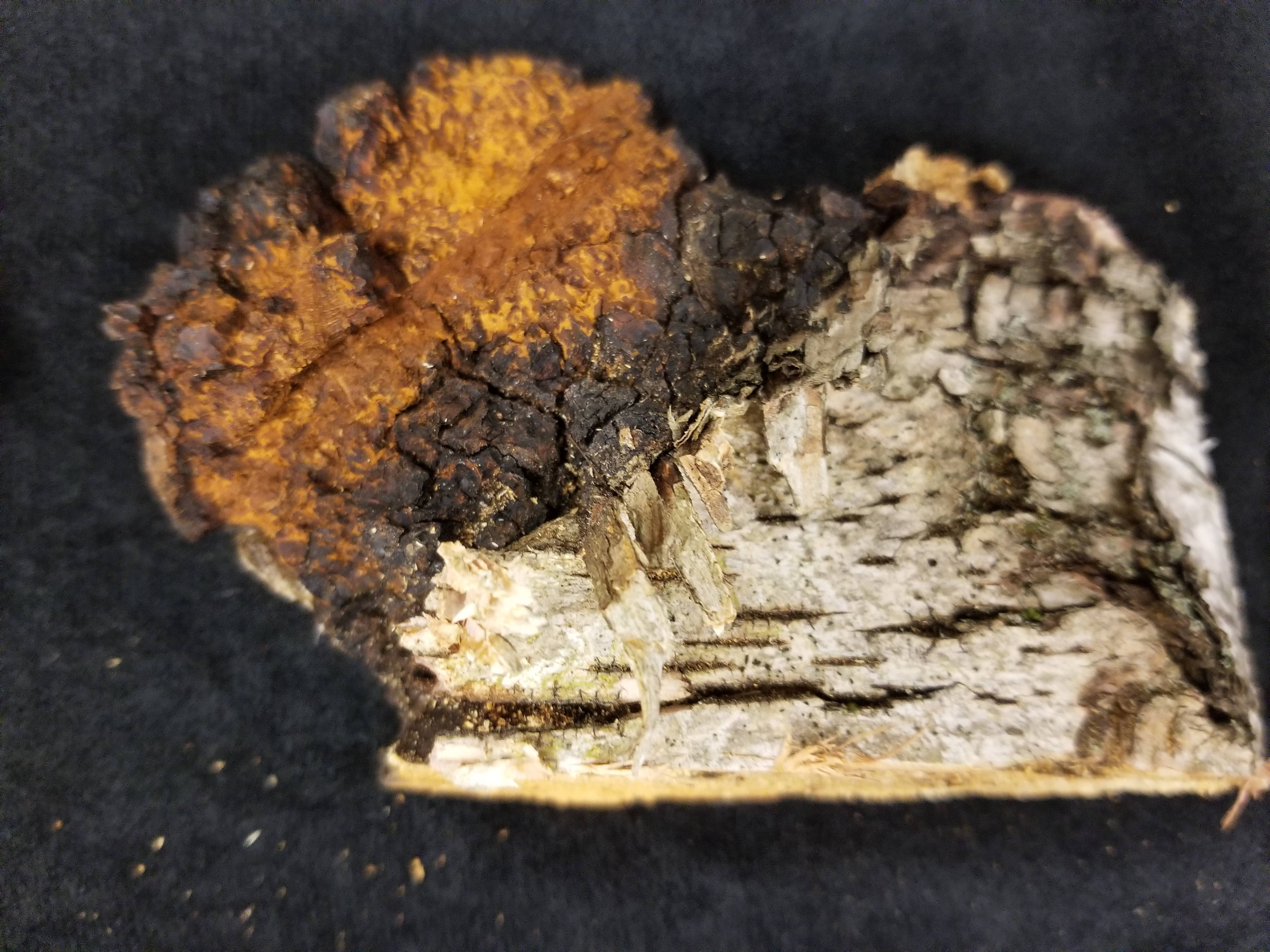Inonotus obliquus
Inonotus obliquus (Acharius ex. Persoon) grows throughout the year mainly on birch trees.

Taxonomy:
- Kingdom: Fungi
- Division: Basidiomycota
- Class: Agaricomycetes
- Order: Hymenochaetales
- Family: Hymenochaetaceae
- Genus: Inonotus
- Species: Inontus obliquus
Inonotus obliquus (Acharius ex. Persoon) grows throughout the year mainly on birch trees. It is a parasitic fungus. The spores enter under the bark then germinate and form hyphae. Eventually the hyphae grow in size and the force causes the bark to crack. It is easy to find on white birch trees because the fruiting body (sclerotium) is a black, hard mass of mycelium that is bursting out of the tree and appears as a canker or charcoal (Fig 1) Inside the fruiting body it is a yellow/orange/brown color (Fig 2). When a drop of KOH is applied inside it will immediately turn the spot black where the KOH was deposited (Fig 3). Inonotus obliquus is used to make tea because of the antibacterial and anti-inflammatory properties and is commonly known as Chaga tea.


References:
- Kuo, M. (2016, January). Inonotus obliquus. Retrieved from the MushroomExpert.Com.



 Print
Print Email
Email




